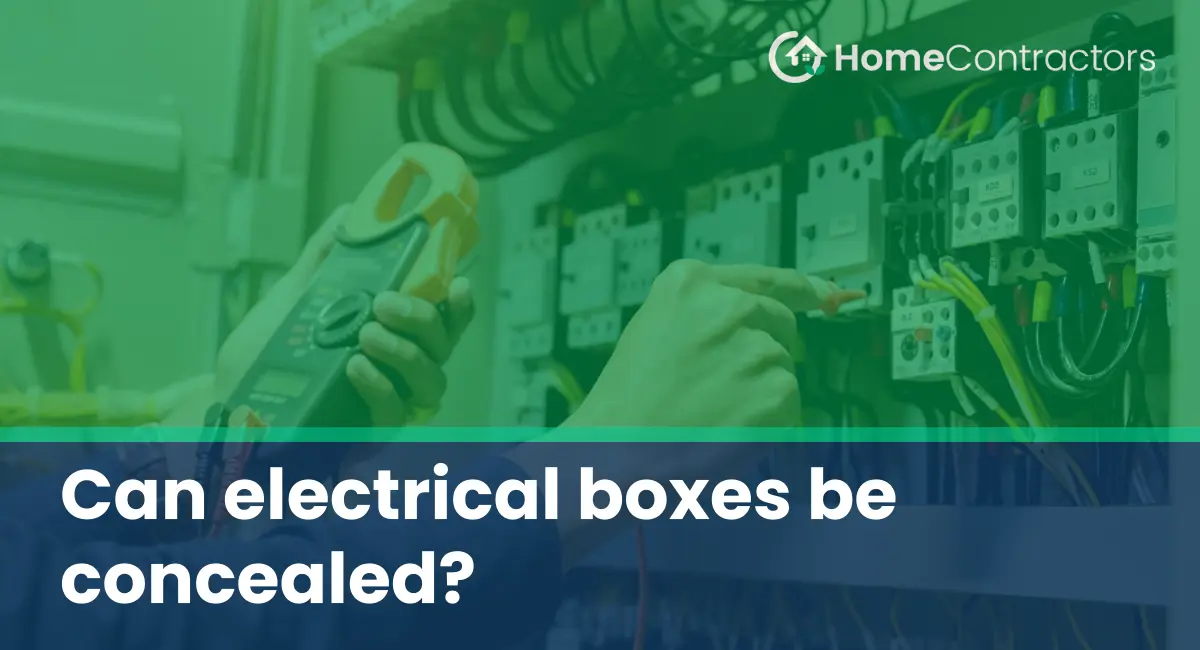The reasons for wanting to conceal electrical boxes may vary. In residential settings, homeowners may prefer a polished and seamless appearance for their walls, especially in areas such as living rooms, bedrooms, and kitchens. Concealing electrical boxes can help achieve this desired look by removing the visual distractions caused by exposed boxes and wires. Additionally, in commercial or retail spaces, concealing electrical boxes can be necessary to create a clean and professional environment.
Safety Considerations
Before considering any modification or concealment of electrical boxes, it is crucial to understand the potential safety implications. Electrical boxes serve an indispensable role in protecting electrical connections and preventing fires, shocks, and other hazards. It is essential to keep these boxes accessible and follow local building codes and electrical regulations. Improperly concealed or hidden electrical boxes may violate safety requirements and could even pose a serious risk to occupants and property.
Concealing Methods
While completely concealing an electrical box may not be feasible, there are several methods to minimize their visual impact and integrate them seamlessly into a space.
- Paint or Wallpaper: One of the simplest ways to make an electrical box less noticeable is to paint it the same color as the surrounding wall. This can help it blend in and become less of an eyesore. Alternatively, covering the box with wallpaper that matches the wall’s pattern or color can achieve a similar effect.
- Decorative Covers: Various decorative covers are available on the market that can be fitted over electrical boxes. These covers come in a wide range of styles, including wooden, metal, or plastic options. These decorative covers can help camouflage the box and make it look more like an intentional part of the decor.
- Recessed Boxes: Another option is to install recessed electrical boxes. These boxes are designed to be set into the wall and can be covered with a removable panel or door. This method allows the box to be tucked away, leaving only a flush door visible. However, recessed boxes require careful installation and may not be suitable for all situations.
- Furniture Placement: In some cases, strategic placement of furniture or other decorative elements can effectively hide an electrical box. By placing a bookshelf, cabinet, or wall art in front of the box, it can be discreetly obscured while still maintaining accessibility.
Consult a Professional
To ensure the concealment of electrical boxes is done safely and in compliance with all local regulations, it is advisable to consult a professional electrician or contractor. They can provide expert advice and assistance to help determine the best concealment method for your specific needs.
While complete concealment of electrical boxes may not be possible, various methods can minimize their visual impact in a space. It is important to prioritize electrical safety and ensure that any concealed boxes remain accessible and meet all relevant building codes and regulations. Consulting a professional can help determine the most suitable concealment method and ensure a safe and aesthetically pleasing outcome. By taking these precautions, electrical boxes can be effectively integrated into the design of any space, achieving both functionality and visual appeal.
